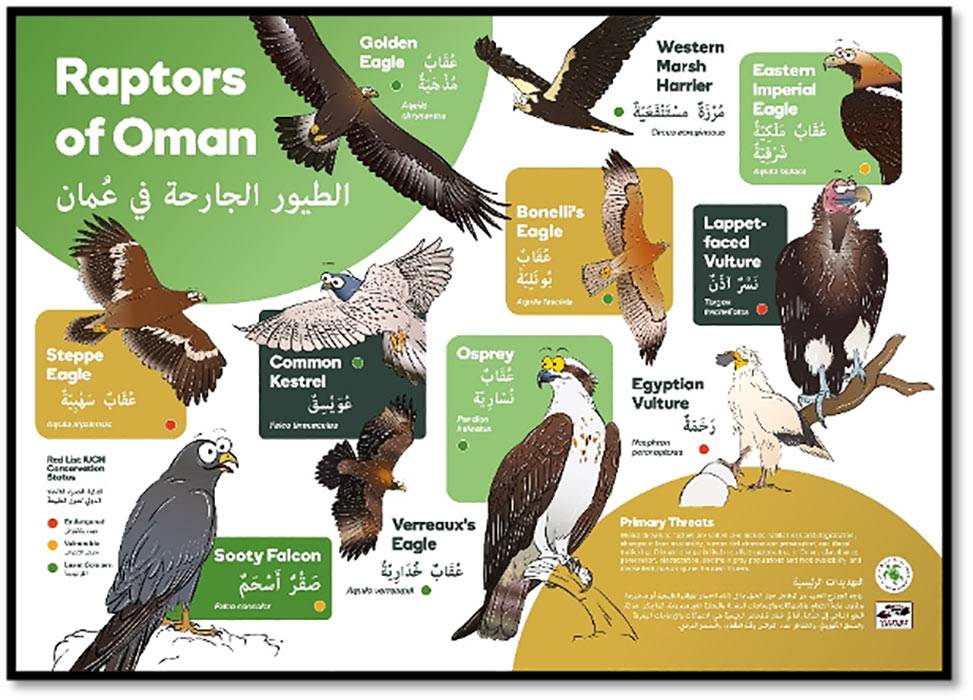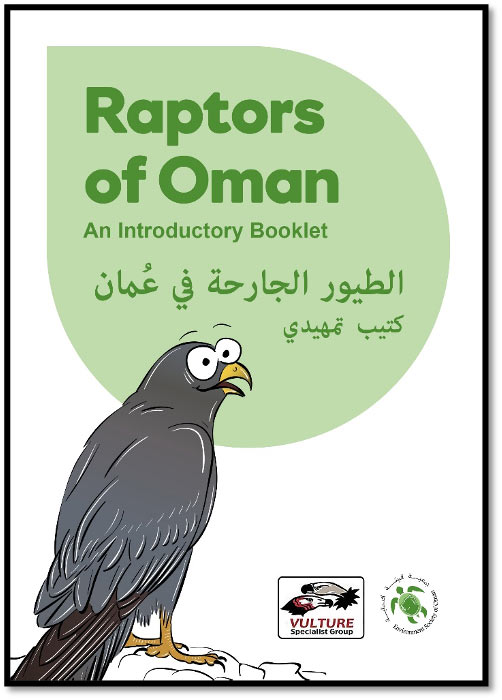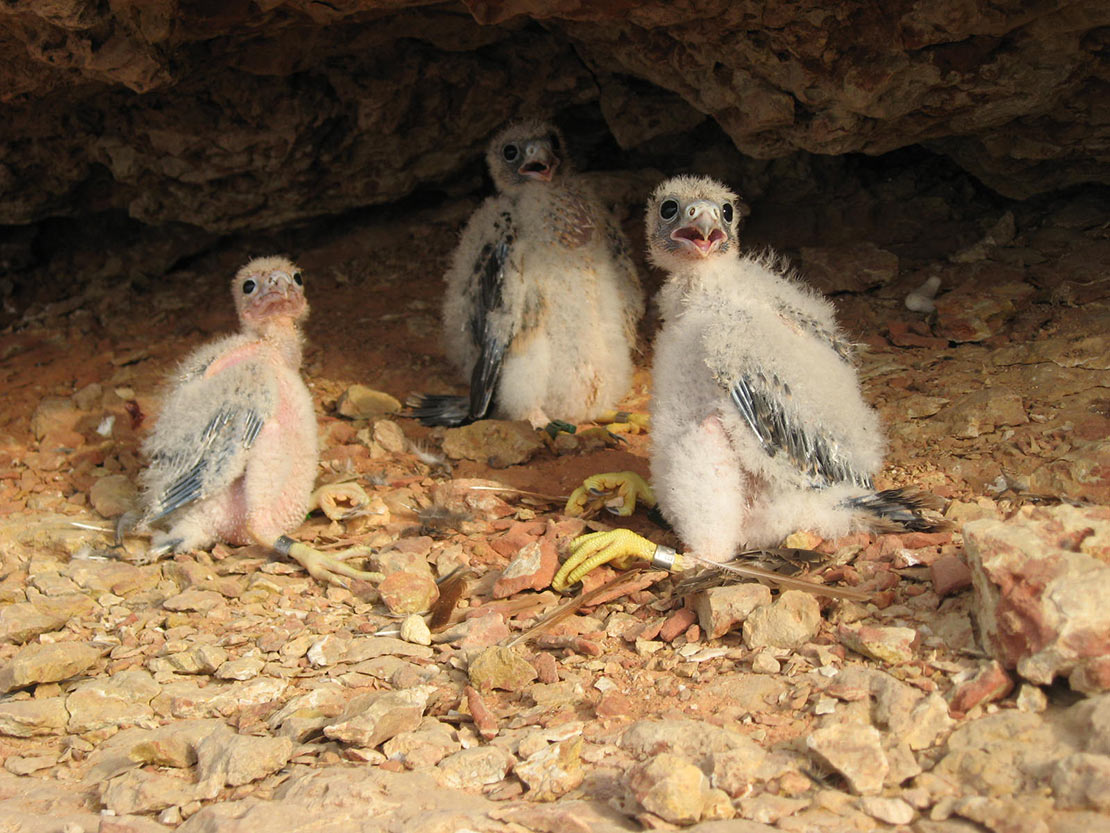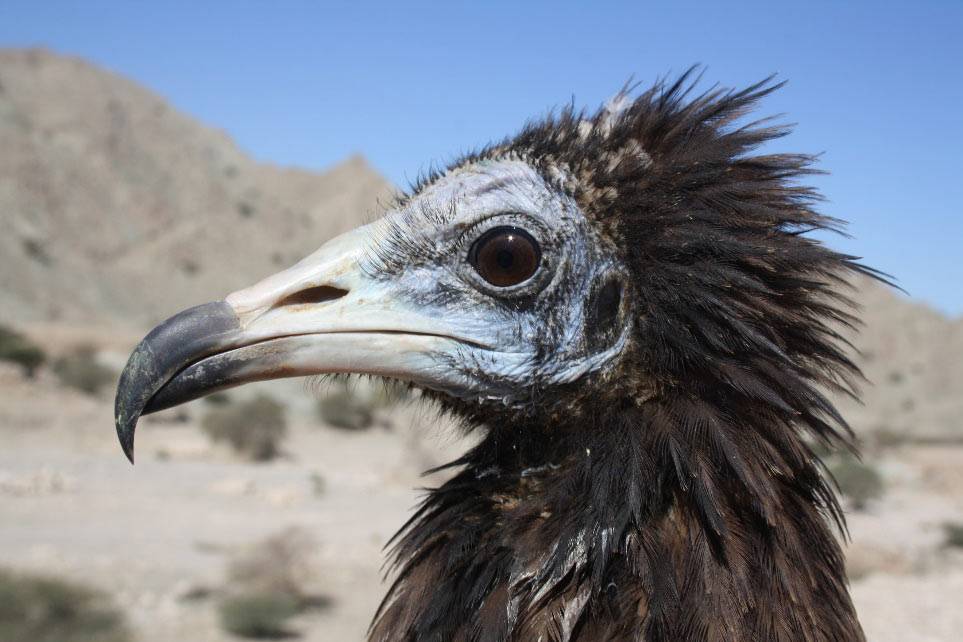Raptor Conservation in Oman
A guest blog by Maïa Sarrouf Willson about Oman’s efforts to conserve raptors


The Sultanate of Oman is home to 39 species of raptors that occur as passage migrants, winter visitors or resident breeders. These include 21 species from the Accipitradae family (buzzards, vultures, hawks, eagles, kites and harriers), 9 species from the Falconidae family (falcons, kestrels and hobbies), 1 species from the Pandionidae family (osprey) and 8 species of owls from the Strigidae and Tytonidae families. A number of those species show conservation concern and are listed as endangered (Steppe Eagle, Egyptian Vulture and Lappet-faced Vulture) or vulnerable (Sooty Falcon and Eastern Imperial Eagle) on the IUCN Red List of Threatened Species.
The proliferation of raptors, and other types of birds, in Oman is mainly due to the absence of large ground predators, the existence of suitable nesting sites, the availability of food supply and the lack of intensive direct persecution. Field accounts of Oman’s raptors date back to the early 70s, and a keen interest to spot them was developed among the local birding community. Many bird enthusiasts record their findings to the Oman Bird List, an ongoing database since 2000 that includes accounts of 531 species.
Contemporary research efforts were mainly dedicated towards Sooty Falcons (Falco concolor), Egyptian Vultures (Neophron percnopterus) and Steppe Eagles (Aquila nipalensis), mainly due to their threatened status. An 8-year study on Sooty Falcons (Falco concolor) led by the Office for Conservation of the Environment, Diwan of Royal Court provided insight about its morphological character, breeding and nesting territories, movement and the overall threats they face.

The tracking of 17 Egyptian Vultures (Neophron percnopterus) from 2015 to date near Muscat shows that Oman’s resident population is much larger than expected, and that the population on Masirah Island is one of the densest in the world. Ongoing tracking of 11 Steppe Eagles (Aquila nipalensis) from Muscat and Salalah has confirmed their migratory routes between Oman and their breeding range in Central Asia. These efforts have been possible with funding and collaboration from various parties such as Oman’s Environment Authority, International Avian Research, Anglo Omani Society, Bernd Meyburg Foundation for Raptor Research and Conservation, and Arid Lands Environmental Consultancy, among others. In 2015, OSME funded the Oman Golden Eagle expedition and although no active nests were found then, it is believed there are few remaining breeding pairs in the Hajar mountains. The Environment Society of Oman has expanded its research in 2021 (with funding from the Disney Conservation Fund) to continue monitoring Egyptian Vultures and exploring the nesting territories of the endangered Lappet-faced vulture (Torgos tracheliotos).

During the first COVID lockdown in early 2020, a team of scientists engaged in awareness raising and developed the ‘Raptors of Oman’ booklet. The booklet, written in both English and Arabic, aims at bringing raptors closer to people and decrypt some of the mysteries surrounding them. It gives a detailed account of 11 species and presents on their identification, status, diet and other curious facts. Photographs and animations have been used to attract a younger audience, and were combined in a comprehensive bi-lingual poster. The booklet, made possible from proceeds from ‘Wild Oman’ art exhibition by Violet Astor in 2019 can be downloaded for free on the following link: shorturl.at/yAFK9. It provides an entry point for avid learners in Arabic, who can increase their knowledge by downloading the Arabic field guide to the birds of the Middle East.
The Government of Oman plays a critical role to the survival of raptors, and has introduced a ban on the use of diclofenac in veterinary care in 2020. Given to domestic livestock to reduce inflammation and relieve pain, the drug is extremely poisonous to many species of raptor, particularly vultures and eagles. The ban was issued in a Ministerial Decree No. 81/2020 by the Ministry of Agriculture, Fisheries and Water Resources, and shows the country’s commitment to the conservation of endangered animals. This move has been welcomed by the global conservation community and follows the line of Pakistan, India, Iran and Bangladesh, who have banned the import and use of the drug due to its toxicity to vultures and eagles.
There are many gaps that need to be filled to further understand the behaviour, movement and ecology of Oman’s endangered raptors and protection is required for all stages of their lives. Electrocution in power lines is an existent problem with various accounts of both Egyptian Vultures and Lappet-faced Vultures electrocuted since 2012. This threat needs to be carefully looked at. Countrywide conservation efforts are heading in the right direction with the most recent plans from the local solid waste management authority to set up pilot vulture restaurants in landfills. A national raptors conservation strategy, including flyway scale conservation, would be vital to ensure the long-term conservation of these species and the habitat they depend on.

Maïa Sarrouf Willson is a conservationist working in the Sultanate of Oman for the past 11 years. She has an MSc in Environmental Management and an MPhil in Conservation Leadership and currently holds the position of Research & Conservation Manager at the Environment Society of Oman.
